Electron Gun
The electron gun has two functions. First it has to provide free electrons and then second, has to accelerate them to the desired to the kinetic energy. Field emission out of a sharp tungsten wire and an 11 stage Cockcroft Walton Multiplier Circuit is used to reach this goal.
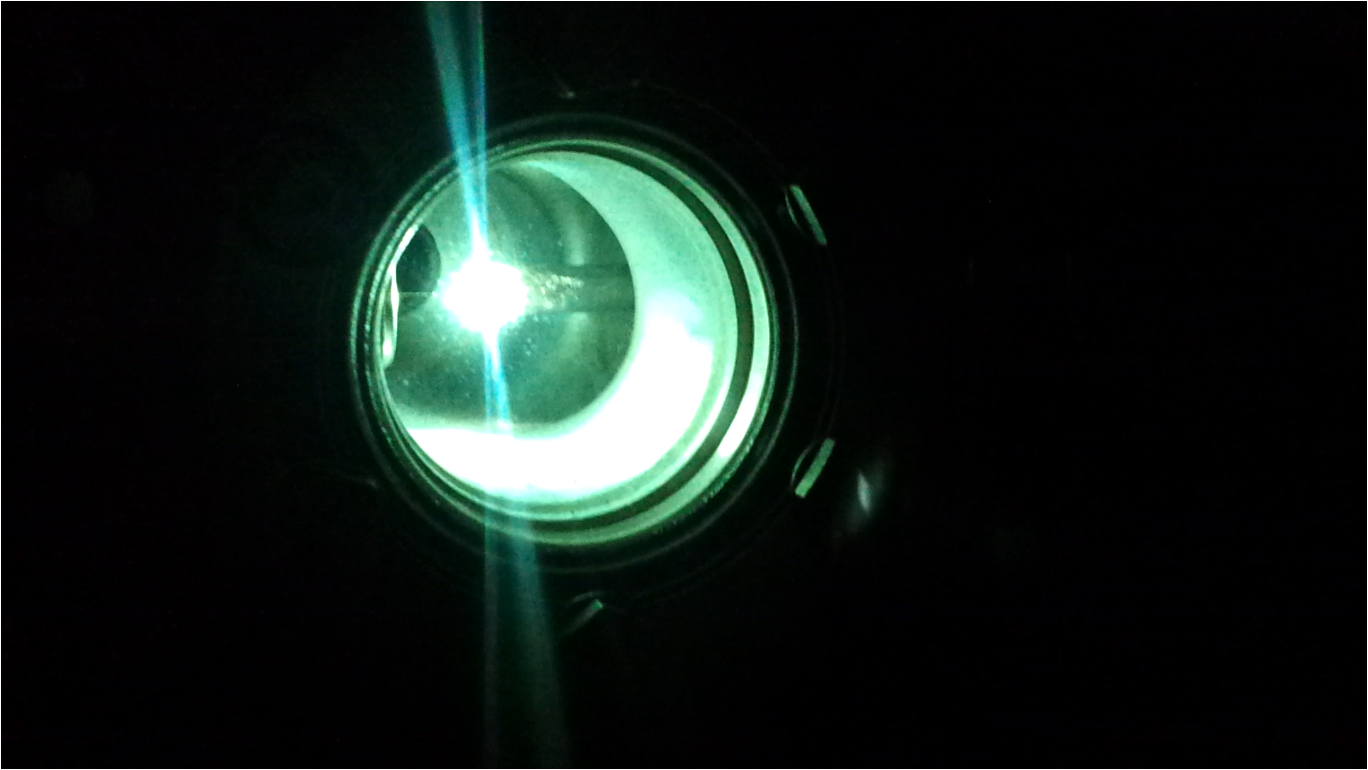 Electron gun of MEGA under operation
Electron gun of MEGA under operation
|
General principle
There is one major principle that all electron accelerators are built on: charged particles can be accelerated by an electrical field. Scientists, physicists and engineers use this phenomenon in devices such as televisions, computer screens, or oscilloscopes. This device commonly known as a cathode ray tube (CRT) provides the components needed to design the accelerator in this project.
Constructed device
Purchasing an electron gun that operates at 100kV is expensive and therefore the team designed the electron gun by making use of a high voltage power supply, an 11 stage Cockcroft-Walton Multiplier Circuit, a tungsten filament and a 0.5inch stainless steel tube. The electron-gun extracts the electrons from a tungsten tip shaped by chemical etching. The tip is sharp enough to reach the needed local high electrical field to allow room temperature field emission.
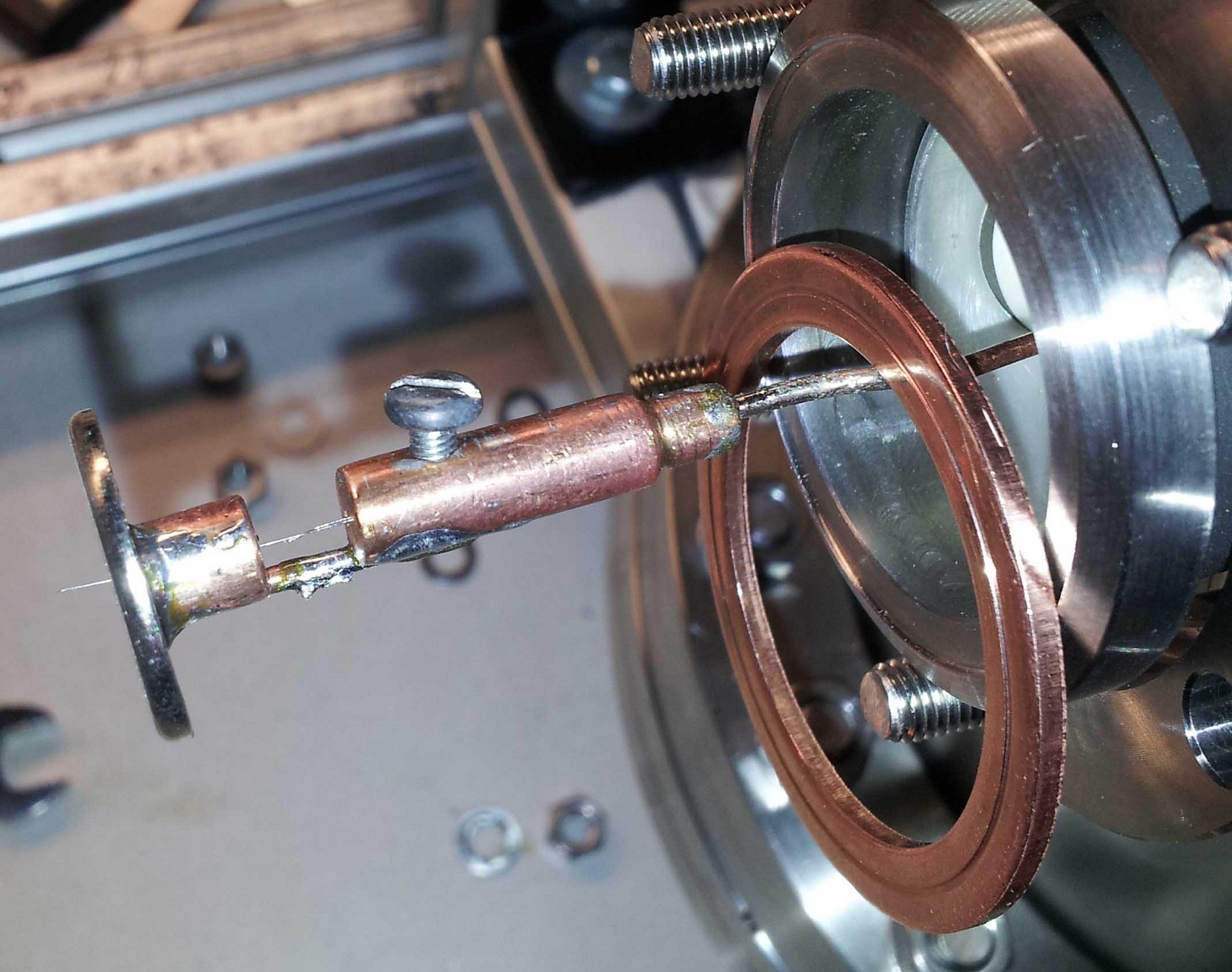 Constructed electron-gun: cathode
Constructed electron-gun: cathode
| 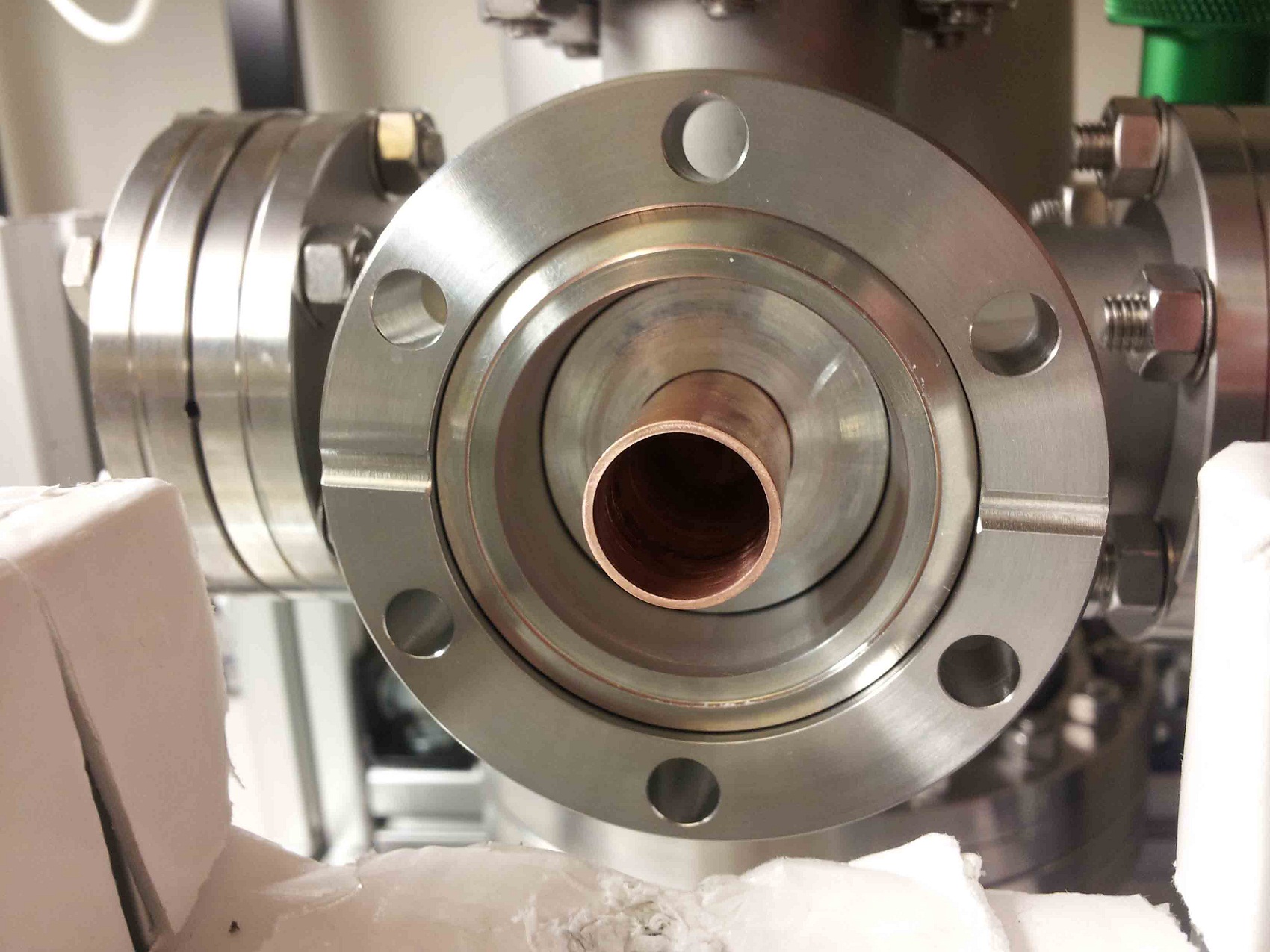 and anode
and anode
|
The high voltage power supply generates 8000 volts that is transferred in the vacuum chamber through the use of an Electric Feedthrough rated for 12000 volts.
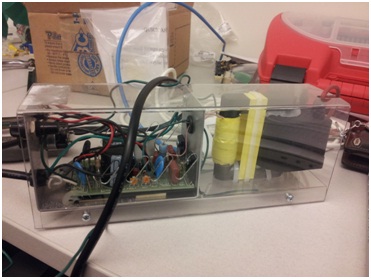 High-voltage power supply
High-voltage power supply
|
An 11 stage Cockcroft Walton Multiplier Circuit is used to multiply the voltage through sets of capacitors and diodes to the desired final value of -100 kV. This high negative voltage is applied to the cathode, a thin tungsten filament. The anode is a stainless steel tube placed a few cm from the cathode.
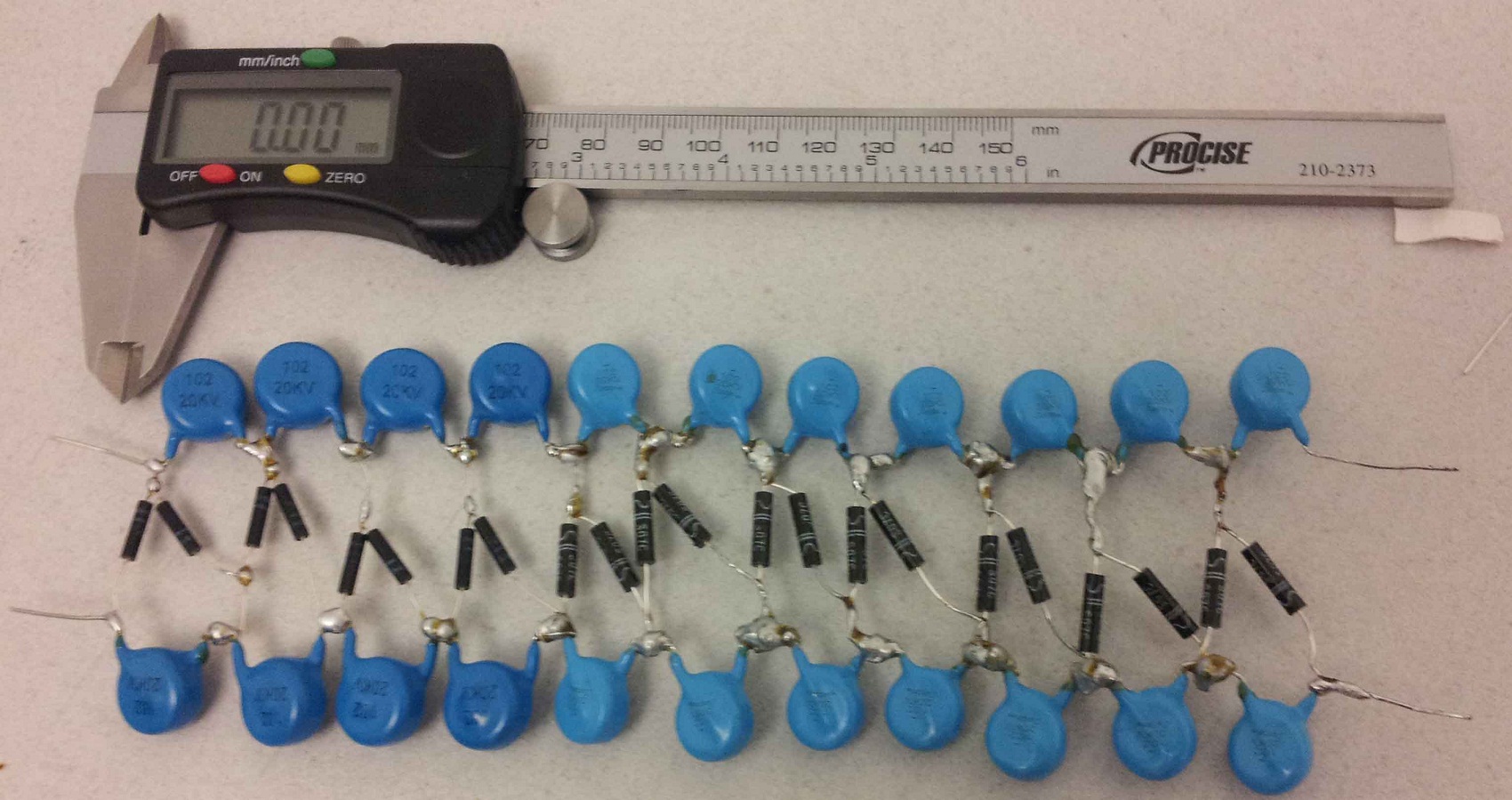 Constructed Cockcroft-Walton multiplier circuit
Constructed Cockcroft-Walton multiplier circuit
|
The optimal cathode-anode distance was determined experimentally. Adjusting the distance was made easier by holding the cathode at a fixed postion and moving the anode accordingly. The cathode was fixed inside a cylindrical glass/ceramic part made out of Macor, which has very high dielectric strength (insulates 64kV per mm at 12mm thickness).
